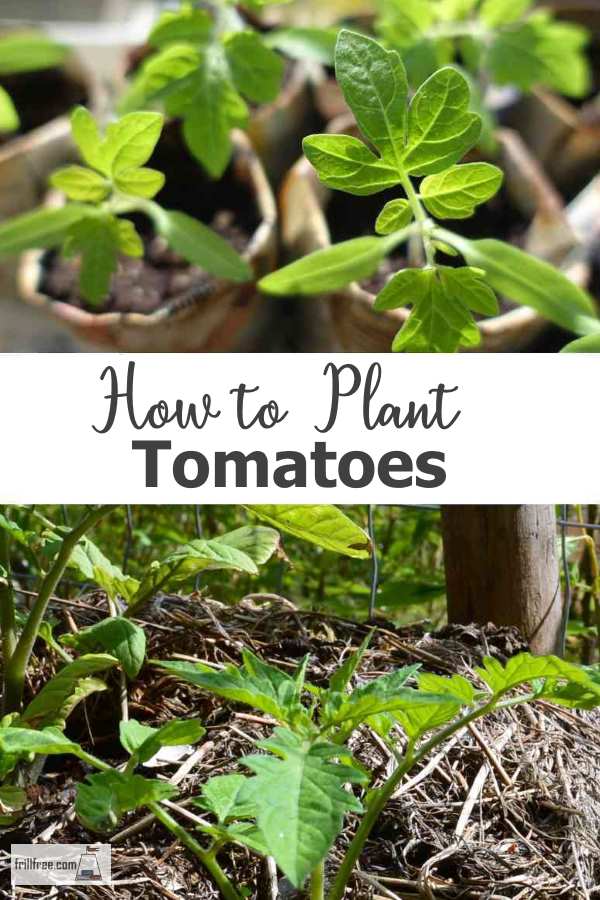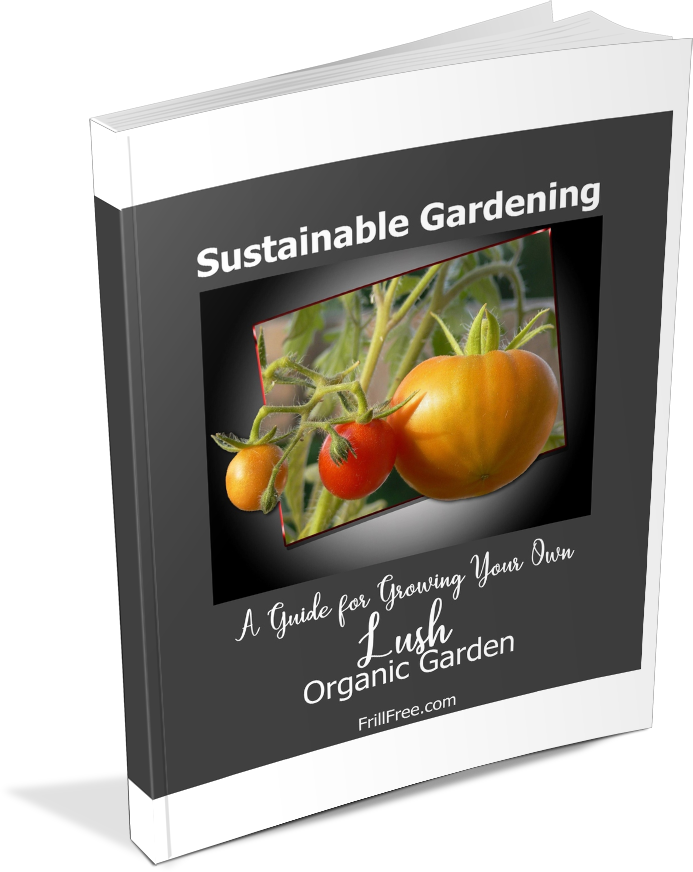- Homesteading
- Growing Vegetables
- How to Plant Tomatoes
How to Plant Tomatoes
A Few Tips and Tricks for growing great tomatoes
Growing tomatoes can be more than just a hobby; it can verge on an addiction, and there's a good reason for this.
A perfectly formed tomato, ripened on the vine, compares to nothing else for flavor and texture.
Once
the addicted gardener perfects the method of producing them, they will
be constantly fiddling to find new and even better ways of growing great
tomatoes.
Seeding tomatoes should take place in March; don't bother seeding them too early because they'll just be spindly and weak by the time May rolls around and it's time to plant.
I wait even longer, till the end of May to seed single pelleted seeds into a yogurt container (with drainage holes). The soil level is very low, and over the next few weeks until the end of June when they will be planted outdoors, it is gradually filled up to encourage roots to grow from the stem. This makes them much sturdier, especially in windy areas, like where I am now.
As tomato plants can't take any frost, there is no hurry to get them in the ground; they won't appreciate being stuck in the cold soil.
They will simply stall, and even though the stress will cause them to form fruit, it will be small and meager.
I usually have at least a few volunteers coming up in the compost pile - if your diet consists of Roma tomatoes like mine (oh, love that Greek salad!) then you might have a few heirloom type plants emerge without any help from you.
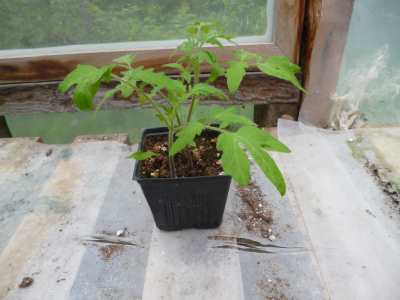 Don't shun the plants that your compost pile produces; in some cases, they're heirloom types, with the added bonus that they're perfectly adapted to your conditions.
Don't shun the plants that your compost pile produces; in some cases, they're heirloom types, with the added bonus that they're perfectly adapted to your conditions.Pull the plants out of their pot - you will see the vigorous roots spiraling at the bottom of the root ball.
The roots are white and healthy looking; I would worry if they were brown, shriveled or not reaching for the moisture at the bottom of the soil.
Gently pull them apart...
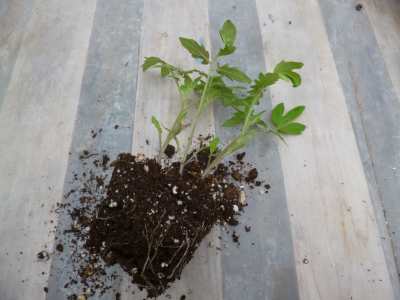 Healthy white roots are a good sign; they know how to reach the moisture at the bottom of the pot, and that's a good indication that they are vigorous and ready to go.
Healthy white roots are a good sign; they know how to reach the moisture at the bottom of the pot, and that's a good indication that they are vigorous and ready to go....and then pull, pinch or cut off the seedling leaves; these are not
necessary any more, now that the plants all have lots of other bigger
leaves (see the green arrow).
The reason for pulling the lower leaves off will be evident soon.
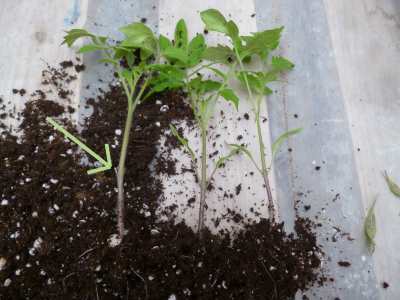 Pruning off the lower leaves will prevent rot from setting in when you plant the seedlings. Yes, that's right, they will be below the soil level...
Pruning off the lower leaves will prevent rot from setting in when you plant the seedlings. Yes, that's right, they will be below the soil level...Then pot up the seedling tomatoes. I use a big pot, because each time you disturb the plants it will set them back.
A mixture of compost, steer manure and sterilized potting soil is a good mix.
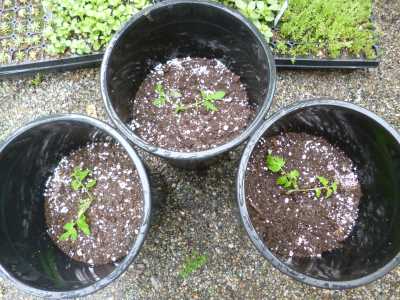 Tomatoes require a huge amount of nutrients to get big enough to produce flowers, fruit and ripen it all in just a few short months.
Tomatoes require a huge amount of nutrients to get big enough to produce flowers, fruit and ripen it all in just a few short months.As you can see, the soil level is right below the top leaves, meaning the whole stem is now below the soil level; this is because unlike many other plants, tomatoes have the ability to make more roots from that part of the stem, giving them more roots to get nutrients.
Over the next few weeks as the plants grow, the lower leaves will again be pruned off, and the soil level topped up.
It won't be long before these puny little plants are producing flowers which will be pollinated and turn into fruit, and by September, they'll be busy ripening it for my salads. Can't wait!
Growing Tomatoes in Pots - what kind of soil do I need?
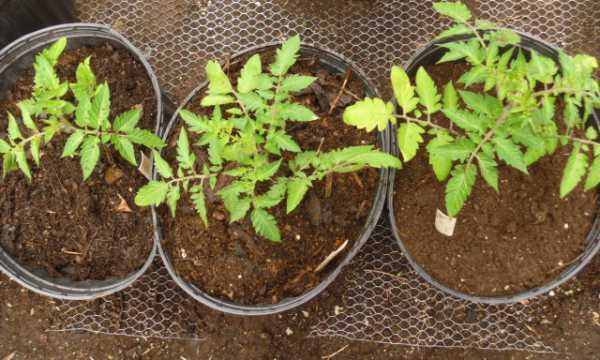 Growing Tomatoes in Pots - what's the best soil?
Growing Tomatoes in Pots - what's the best soil?I'm trying to figure out what kind of soil and fertilizing system works the best for growing paste tomatoes in containers.
I've
grown many other types, mostly hybrids, and this year was offered some
seedlings of San Marzano - for those who don't know, it's not a hybrid,
it's an heirloom variety, which means they can be self pollinated and
you can keep the seeds for next year.
You have to keep the flower truss
isolated after pollinating it by hand, usually by putting a paper bag
over it to prevent insects from contributing pollen from other plants,
which would effectively make the resulting plants hybrids.
So,
here's where we're at so far; I took three plants of the San Marzano
seedlings, and potted them into large 5 gallon containers.
In one (on the left) I've used aged compost primarily made with leaves, horse manure and kitchen scraps.
In
the middle pot, again, I've used compost but this has a high percentage
of sawdust, and used potting soil (Sunshine Mix #4, which has added
aggregate for drainage) and the one on the right has a small amount of
compost in the bottom, then is filled with my sandy and well composted
garden soil.
It will take a month or two to see the results.
Caution; make sure you don't use soil with any kind of manure that you don't know the provenance of. Many hay companies use Grazon, a pernicious herbicide that goes through the animal and into their manure. Even composting it won't remove it, only time. I lost two years of tomato production due to this.
